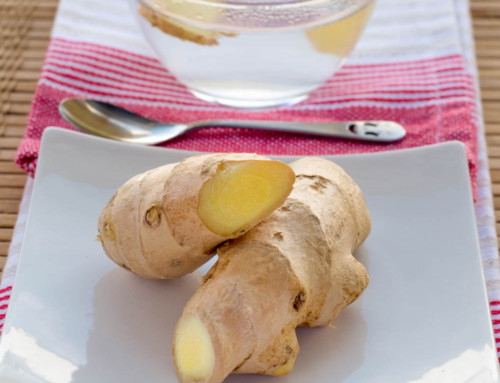Hot or cold, black or sweetened, we all have a favourite way to sip our daily coffee. For some of us, coffee marks the start of the day and equally important for others it creates a pause during a busy time. Many who don’t enjoy coffee still gravitate towards a cup or shot of espresso to get that “boost”. Today, our love affair with coffee has never been stronger, in spite of the bad press that this black gold can be harmful for the heart, blood pressure, stomach line and potentially causing several types of cancers.
Thanks to science, much of coffee’s negative stigma has gradually disappeared within the last two decades. Evidence based research on coffee produced compelling benefits from having more energy, to decreasing mortality rates and life threatening diseases. This shift in viewing coffee as a health product is so evident that the World Health Organization (WHO) took it off the possible carcinogen list.
So, what’s with these sudden changes? And, can we just load up on coffee to improve health and keep diseases at bay? In this post, we discuss what is presently known about coffee and the benefits surrounding its consumption.
The active ingredient Caffeine
It has been known for some time that coffee’s active ingredient caffeine acts as a stimulant, directly improving energy and performance. Besides coffee, caffeine is present in many products on the market today, all playing a role in affecting sleep, cognition, memory and performance (both mental and physical kind). Caffeine is a heavily researched topic, with the first published study dating back to 1907. Most caffeine papers focus around its applications in nutrition, supplementation, performance and pharmaceuticals.
An average 8 oz (237 ml) cup of coffee contains around 90 mg of caffeine. After ingestion, caffeine absorbs fairly quickly through digestive tract (around 45 mins, depending on a person), and peaks in the blood stream within 90 minutes or so. From there, the cardiovascular highways carry it throughout the body where it is absorbed and reacted inside various types of cells that make up tissues, organs and systems. Caffeine is able to affect our basic and fundamental actions, by producing a number of stimulating effects on nerve activity, hormone response, muscle tissue and overall metabolism and body temperature. Caffeine’s effect lasts anywhere between two to four hours, by which time it is metabolized (broken down) inside the body.
Brain Activity and Health
If you’ve ever consumed anything with caffeine in it (be it coffee, tea, energy drinks, dark chocolate, to name a few), you likely noticed that it made you more alert and energetic. This is due to caffeine’s ability to affect adenosine receptors that are found in the brain, heart and kidneys.
What is an adenosine receptor and why is it important?
Some of us may not be aware of the term Adenosine Triphosphate, but we all heard of its abbreviated form ATP. ATP is a universal metabolic molecule for energy transfer, assembled by the body through anaerobic or aerobic energy pathways for every type of cellular function. Like any cell, neurons inside our brain use ATP for energy while producing byproducts such as ADP, AMP, Adenosine and Phosphate groups.
When the body is working hard, or for long time, the byproducts (adenosine molecules) accumulate inside cells and begin to seep outside. The brain is constantly working, as it’s always on, thinking, planning, and solving. Here, the brain cells—neurons—use ATP and shuttle ever-growing adenosine concentrations out of themselves. Once out of the cells, but still inside the brain, the adenosine molecules bind to adenosine receptors, which are imbedded within neural cell walls. Attaching to the adenosine receptor activates a process by sending a signal to the neuron cell to slow down its activity. This is a “self preservation” type of mechanisms, as high adenosine levels message the brain commander to slow down and rest.
Adenosine and caffeine have similar “active” structures. Similar to a neurotransmitter, caffeine too is able to bind to adenosine receptors (both A1 and A2 types) but without dispatching a tired and sleepy motion to neuron cells. This essentially deactivates adenosine receptor all together, and the brain maintains its alert activity, working harder and longer. Caffeine also works on other organs which have adenosine receptors, including heart and kidneys. Some of us may have experienced caffeinated effect due to faster heart beat and/or frequent bathroom trips.
Caffeine also has some medical applications, and is often part of several pain-relief medications, such as acetaminophen, aspirin and so on. The exact process by which caffeine helps alleviate headaches and migraines is not exactly known, but has been shown to enhance painkilling properties of these drugs.
Now, besides helping with a common headache, series of long and extensive studies link regular caffeine consumption with lower risk of several neurodegenerative diseases such as Alzheimers and Parkinson. Again, the method of how caffeine lowers the risk of such diseases remains unclear, but the observational data shows overall healthier brain activity and function.
Metabolism and Fat Burning
There is compelling evidence associating caffeine’s influence on fat loss. Most are human observational trials consisting of prescribed caffeine amounts and recorded results. One such study shows 8 kg (17+ lbs) loss in body weight and a 4.4 percent decrease in body fat by using a high-dose coffee extract (1050 mg). Scientists believe that caffeine increases lipolysis—breakdown of body fat stores into free fatty acids.
Burning fat reserves increases overall metabolic rate as caffeine also increases thermogenesis (heat production). Scientists predict that caffeine’s stimulating properties are responsible for enhancing overall fat metabolism.
Caffeine and Performance
The mountain of research on caffeine as performance aid has been consistently growing in size and understanding. Sport scientists conduct numerous tests on caffeine products, caffeine containing drinks, and/or caffeine supplements relating to athletic performance. There are number of variables which raise or lower caffeine’s effectiveness on a person. These include the doses, times of ingestion, bodyweight, and individual sensitivity to caffeine itself.
Endurance
Study after study supports caffeine’s ability to improve athletic performance. These results are more pronounced with endurance based activities. Part of the theory is again, caffeine’s ability to influence body fat breakdown, which greatly benefit aerobic style sports, and using free fatty acids for energy. The results vary based on test protocols, but all caffeine test groups seem to show improvements in their aerobic capacity.
Strength and Power

There are fewer research studies on caffeine supplementation for strength and power development, when compared to endurance protocols. However, the smaller experimental data does show enhanced power outputs during high intensity training. One of the most recognized tests for anaerobic capacity and power is the Wingate test. This world standard consists of a 30-second all out maximum sprint on ergonomic bicycle (or, other suitable stationary machine). One of the studies tested anaerobic output using the Wingate test linking caffeine with greater performance and force production.
Also, measuring strength capacity during free weight exercises such as squats and bench presses, showed increased performance by caffeine subjects. A recent review looked at 16 studies that collected data from combined 246 participants regarding caffeine’s effect on anaerobic performance, citing significant power output differences. Other experiments show caffeine’s selective strength increases in upper versus lower body, affecting some muscles but not others.
So, what’s with selective muscle activation?
It simply underlines the complexity of caffeine’s effect on the body where exact mechanism remains unclear. The new belief is that caffeine stimulates cells within various organs and tissues, including neurons inside the brain and muscle spindles of skeletal muscle. This compounding effect has been noted in various literature by recording stronger neural and muscular patterns producing greater and faster contractions. On the field and in the gyms caffeine produces stronger, faster and farther physical responses compared to the placebo counterparts.
Recovery
As caffeine has been linked with increase of lipolysis (breakdown of fats into free fatty acids), it has also been tested in terms of recovery times among athletes and weekend warriors alike. There is a wave of research focusing on caffeine not as a stimulant but rather as a recovery agent. Studies in this genre link caffeine with faster repair and recovery processes, including feeling less sore (delayed onset muscle soreness) after a workout.
Caffeine appears to improve recovery not only between training periods, but also during an exercise session, or competition within the same day. For instance, one research paper gave 8mg/kg of body weight of caffeine to athletes after sprint intervals to exhaustion, and then re-tested same individuals four hours later. Being a glycogen-depleting exercise, sprints are physically and mentally draining however, the caffeinated group showed improved performance on the second sprint interval test to exhaustion, compared to control. Furthermore, the caffeinated subjects within the study were able to exercise longer at such all-out conditions (48 minutes) compared to placebo (19 minutes) and carbohydrate (32 minutes) groups. This suggests that caffeine improves repeated performance and increases muscle glycogen resynthesis, by enhancing overall fat metabolism and supplying energy of free fatty acids during and post exercise.
A Cup of Wellness
As the third most consumed beverage in the world (after water and tea), coffee is the preferred drink of choice amongst North Americans. But coffee is not only about caffeine and the morning “kick”. Coffee beans contain over 1000 biologically active compounds that are maintained throughout the roasting process and make the final cup. A single cup of java has small amounts enzymes, vitamins, minerals and oils including:
- Vitamin B2 (Riboflavin)
- Vitamin B5 (Pantothenic Acid)
- Vitamin B3 (Niacin)
- Elements such as Magnesium, Manganese and Potassium.
On average, North Americans consume three to four cups of coffee per day, improving their overall nutrient consumption. Coffee’s popularity has made it one of the top researched food products. As far as the data goes, coffee studies are well funded, enormous in size and long in duration. The latest research makes bold claims, citing some significant and in some cases, life changing benefits. The following is a small summation of health and wellness topics that coffee research is brewing.
Live Longer
Now, before you dub this article portion as bogus, or the opposite, begin using coffee as a fountain of youth, lets take a closer look at the science between the lines. Like many coffee studies, these long term experiments follow tens of thousands of people for decades, noting their general habits, including coffee consumption. Afterwards, the data crunching funnels into statistical groupings showing that people who drank coffee happened to live longer than people who didn’t.
We had no difficulty finding ten studies published within the last decade, all show similar findings. Through their vast data recordings, these experiments all tend to conclude that drinking more coffee lowers all-cause mortally. And, as mentioned before these studies are large and long. From groups of 20,000 people followed for 10 years to cohort of 400,000 individuals observed for 14 years—all drive the same point that coffee improves wellness and life.
How much coffee should you drink to increase the longevity?
The consensus seems to be over 3 cups daily shown to decrease mortality risk around 10 percent; where over 4 cups drops that number to about 12 to 65 percent (numbers vary due to different studies and involved variables). Now, there are other factors in play, such as your diet, physical activity, smoking, as well as age and sex. But the numbers all point to the same direction—drink coffee, and you’ll live longer.

Antioxidants
Besides caffeine, coffee contains large number of antioxidants. These important molecules are essential for survival of all living organisms. Through metabolic reactions, the body produces free-radicals, which are unstable molecules and react with many other compounds. Free radicals are not all bad, and extensively used by our Immune system to defend against foreign bacteria and viruses through attacking their cells and DNA/RNA.
The body maintains a balance by producing both free-radicals and antioxidants. However, in the modern society, there are a number of factors that increase our productivity of free radicals. Air pollution, smoking, drinking alcohol, eating polysaturated fats, extensive sun-tanning, all contribute to excessive oxidative stress and production of free radicals. Greater free-radical concentrations upset the overall balance, leading to the damage of body’s various compounds, molecules and cells. Free radicals’ instability comes down to an incomplete molecular structure that is missing an electron (a negatively charged particle). Free radicals move around the body and damage tissue by stealing electrons from functioning compounds that make up our DNA, cell structures and enzymes. This is where antioxidants play an important role by reacting with free-radicals and donating their own electrons, essentially stabilizing and neutralizing their effect.
Risk of Diseases and Cancers
There are many different types of antioxidants, and number of them continue to be actively studied by scientists regarding potential benefits in various cancers and diseases. Many food products contain antioxidants, coffee being one of them. Several studies named coffee as the number one antioxidant source within the Western diet. Coffee is not the richest food for these important compounds, but (as mentioned earlier) the average person easily consumes three to four cups of coffee per day, therefore increasing the overall total.
Coffee contains several key antioxidants including hydrocinnamic acids and polyphenols. Hydrocinnamic acids have been extensively studied showing a wide range of free radical neutralization and prevention of oxidative stress. The polyphenols (in coffee) have been associated with anti-inflammatory properties which lower the risk of many cancers in both men and women including: lung, prostate, breast, endometrial, pancreatic, stomach, skin and colon variety.
Caffeine within coffee has also been shown to improve the vitality of blood vessels by increasing nitric oxide production which increases tissue elasticity. The bioactive ingredients within coffee have been linked with long term lower blood pressure. As heart has adenosine receptors, the blood pressure may and does increase during the presence of caffeine. However, the overall heart rate and blood pressure will subside once caffeine has been metabolized.
Due to environment, diet and stress levels, number of body’s biochemical processes may become impaired and lead to health risks associated with metabolic syndrome. Metabolic syndrome is an umbrella-style term for several medical conditions including increased blood pressure, excess body fat, high blood sugar and cholesterol levels. Metabolic syndrome has been closely linked to various diseases including obesity, cardiovascular disease and diabetes. As coffee naturally possess stimulating (caffeine) and anti-inflammatory (antioxidants) properties, it is continuously researched for potential metabolic syndrome treatments. Numerous studies shown that coffee drinkers have 25-50% lower risk of developing type 2 diabetes (T2D). As coffee has been linked with increasing fat metabolism, it simultaneously affects body composition, blood sugar and insulin sensitivity in a positive way. Coffee’s complex bioactive makeup cascades other benefits including a healthier liver, improved HDL (“good” cholesterol) levels and reduced risk of developing heart disease and/or stroke.
Final Thoughts
Coffee is one of the most popular beverages on the planet, and is widely consumed in North America. Coffee improves energy, drive and intensity among strength, endurance and power type activities. The main stimulant—caffeine—has been shown to affect numerous body tissues both within nervous, endocrine and muscular systems.
Coffee has many bioactive ingredients that increase our metabolism, improve body composition while lowering risks of numerous serious and deadly diseases. Coffee is important within the Western diet, and has been named the number one source for antioxidant consumption.
Coffee has been and continues to be extensively studied. Many of these experiments are impressive and show substantial promise of greater health and longevity.
References:
Ali, A., et al. (2016). The influence of caffeine ingestion on strength and power performance in female team-sport players. Journal of the International Society of Sports Nutrition, 13, 46.
Bowtell, JL., et al. (2018). Improved Exercise Tolerance with Caffeine Is Associated with Modulation of both Peripheral and Central Neural Processes in Human Participants. Frontiers in Nutrition, 5, 6.
Croft KD. (2016). Dietary polyphenols: Antioxidants or not? Archives of Biochemistry and Biophysics. Apr 1; 595: 120-4.
Fresco, P., et al. (2010). The anticancer properties of dietary polyphenols and its relation with apoptosis. Current Pharmaceutical Design. Jan; 16(1): 114-34
Grgic J. (2018). Caffeine ingestion enhances Wingate performance: a meta-analysis. European Journal of Sport Science. Mar; 18(2):219-25
Grgic, J., et al. (2018). Effects of caffeine intake on muscle strength and power: a systematic review and meta-analysis. Journal of the International Society of Sports Nutrition, 15, 11.
Kampa, M., et al. (2007). Polyphenols and cancer cell growth. Reviews of Physiology, Biochemistry and Pharmacology. 159: 79-113.
Landete, JM. (2012). Updated knowledge about polyphenols: functions, bioavailability, metabolism, and health. Critical Reviews in Food Science and Nutrition. 52(10): 936-48.
Miranda, AM., et al. (2017). Association between Coffee Consumption and Its Polyphenols with Cardiovascular Risk Factors: A Population-Based Study. Nutrients, 9(3), 276. http://doi.org/10.3390/nu9030276
Mora-Rodriguez R., et al. (2012). Caffeine ingestion reverses the circadian rhythm effects on neuromuscular performance in highly resistance-trained men. PLoS One, 7(4):e33807.
Nawrot, P., et al. (2003). Effects of caffeine on human health. Food Addit Contam. 20:1–30
Pickering, C., Kiely, J. (2018). Are the Current Guidelines on Caffeine Use in Sport Optimal for Everyone? Inter-individual Variation in Caffeine Ergogenicity, and a Move Towards Personalized Sports Nutrition. Sports Medicine 48(1), 7–16.
Rivera-Oliver, M., Díaz-Ríos, M. (2014). Using caffeine and other adenosine receptor antagonists and agonists as therapeutic tools against neurodegenerative diseases: A review. Life Sciences, 101(0), 1–9.
Sinha, R, et al. (2012). Caffeinated and decaffeinated coffee and tea intakes and risk of colorectal cancer in a large prospective study. The American Journal of Clinical Nutrition, 96(2), 374–381.
Teixeira, J, et al. (2013). Hydroxycinnamic Acid Antioxidants: An Electrochemical Overview. BioMed Research International, 2013, 251754.
Timmins TD, Saunders DH. (2014). Effect of caffeine ingestion on maximal voluntary contraction strength in upper- and lower-body muscle groups. Journal of Strength and Conditioning Research. Nov; 28(11):3239-44
Tucker LA. (2017). Caffeine consumption and telomere length in men and women of the National Health and Nutrition Examination Survey (NHANES). Nutrition and Metabolism (London). Jan31; 14:10 eCollection 2017.
Warren GL et al. (2010). Effect of caffeine ingestion on muscular strength and endurance: a meta-analysis. Medicine and Science in Sports and Exercise. Jul; 42(7):1375-87
We hoped you enjoyed this article, if so, please share it on your favourite social media so, we can get on google’s radar. Fell free to leave us a comment and start a discussion on the topic.
If you are looking to build strong, lean and beautiful shoulders be sure to check out our training books:






